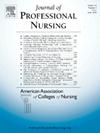工作结合学习经验的学生选择框架:加强分配学生的决策过程
IF 2.9
3区 医学
Q1 NURSING
引用次数: 0
摘要
导言:大约 50% 的大专学生参加了工作综合学习 (WIL) 体验。在本科护理课程中,学生选拔小组将学生分配到每个可用的 WIL 体验中,但目前还没有已知的框架来指导这一决策过程。本文介绍了护理专业教师为支持决策过程而开发的学生遴选框架(SSF)。讨论 "学生选择框架 "强调了几个需要考虑的因素,包括学生的安置偏好、学生的安置历史、学生的支持声明、指导教师的反馈和推荐、累积平均学分绩点以及学生的自我反思。该框架的实施提高了学生选拔的客观性,增强了选拔过程的透明度,并提高了学生安置决定的效率。学生遴选框架可作为指导,并由分配学生参加实践学科 WIL 体验的大专院校教师进行修改。本文章由计算机程序翻译,如有差异,请以英文原文为准。
Student Selection Framework for work-integrated learning experiences: Enhancing the decision-making process for assigning students
Introduction
Approximately 50 % of post-secondary students attend work-integrated learning (WIL) experiences. In an undergraduate nursing program, the student selection team assigns students to each available WIL experience, but there are no known frameworks to guide this decision-making process. This paper describes the Student Selection Framework (SSF) developed by nursing faculty to support the decision-making process. The purpose of sharing this work is to fill a gap in the literature on structured processes for assigning students to WIL experiences.
Background literature
While there is some literature about the placement process from a broader perspective, there is a gap in the literature about the decision-making process of selecting students for WIL experiences.
Discussion
The Student Selection Framework highlights several factors to consider, including student placement preference; student placement history; student supporting statement; instructor feedback and recommendation; cumulative grade point average; and student self-reflection. This initiative has been modified over four terms to enhance the selection process.
Conclusion
Implementing this framework has resulted in refined objectivity of student selection, enhanced transparency of the selection process, and efficiency of student placement decisions. The Student Selection Framework can be used as a guide and modified by post-secondary faculty who assign students to WIL experiences in practice disciplines.
求助全文
通过发布文献求助,成功后即可免费获取论文全文。
去求助
来源期刊
CiteScore
4.80
自引率
8.00%
发文量
153
审稿时长
52 days
期刊介绍:
The Journal will accept articles that focus on baccalaureate and higher degree nursing education, educational research, policy related to education, and education and practice partnerships. Reports of original work, research, reviews, insightful descriptions, and policy papers focusing on baccalaureate and graduate nursing education will be published.

 求助内容:
求助内容: 应助结果提醒方式:
应助结果提醒方式:


